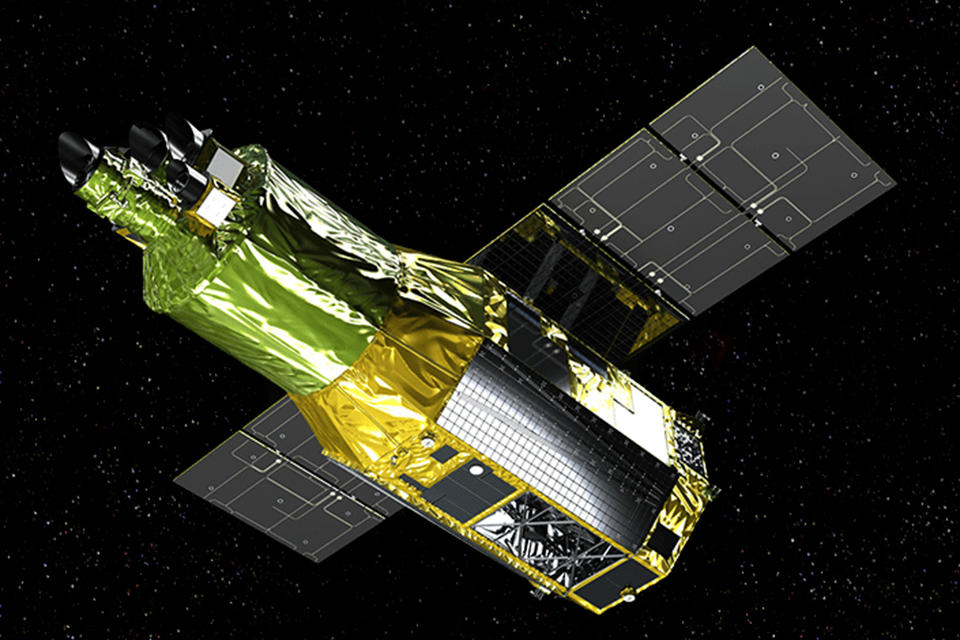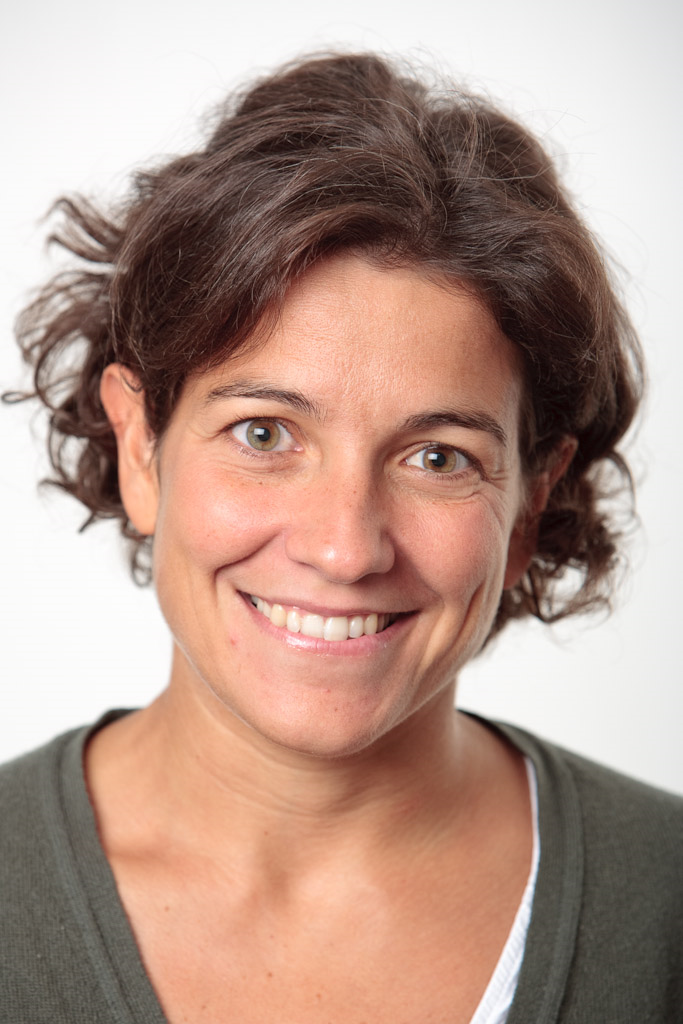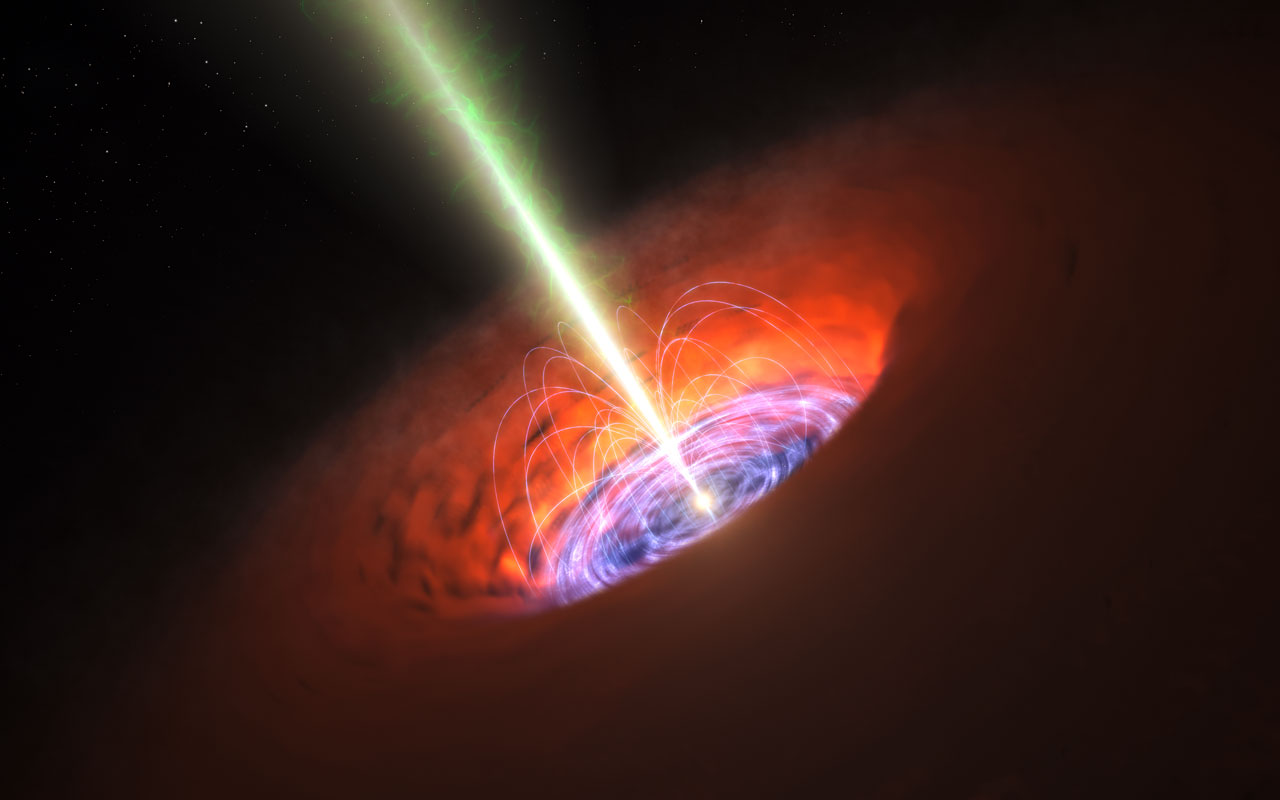
From the ground to the sky
ESO’s high-energy astrophysics expert on being involved in X-ray space missions
- Some of the remaining mysteries behind black holes
- Why María chose to become an astrophysicist rather than a particle physicist
- Why ground-based and space-based astronomy should evolve in parallel
- How different science organisations achieve more through collaborating
Q. Firstly, could you tell us a bit about your role at ESO? What do you do on a daily basis?
A. I’m an ALMA astronomer, meaning half of my time is dedicated to ALMA Observatory duties. This spans a range of activities, including scheduling different projects to happen at the right time, under the right conditions.
The other half of my time is spent on my own research, where I am really free to work on whatever I want. So I focus on X-ray binary systems, which consist of either a small black hole (by which I mean around ten times the mass of the Sun!) or a neutron star, as well as a normal star. The black hole or neutron star pulls matter from the normal star. This process, called accretion, powers the most energetic phenomena in the Universe and releases a lot of X-rays. These X-rays can be observed using dedicated space telescopes, and I look at these X-ray observations together with observations of the same systems in other wavelengths of light made by telescopes on the ground. This gives me a lot of information about what’s going on in different parts of the system.
Q. What first got you interested in astronomy?
A. At university I specialised in particle physics, but after my master’s degree, particle physics seemed to be at the stage where the most exciting science had already been done. It is also difficult to work on your own research in particle physics; everything needs big expensive particle accelerators and extensive collaborations. So I switched to astronomy because of the amazing number of things that can be done with telescopes — both by collecting new data and by analysing data that already exist.
Q. And you are now an expert in high-energy astrophysics. Could you tell us a bit more about your research and why it inspires you?
A. When a black hole or neutron star in a binary system pulls matter from a companion star, a disc forms around the black hole or neutron star, consisting of matter dragged off of the companion star, and this is what feeds the heavier object. At some point this disc is heated so much that the upper layers evaporate and matter flies away from the system in the form of winds. These winds have speeds of the order of 1000 km/s and are detected predominantly in X-rays and sometimes with telescopes that observe optical light. However, these winds are “slow” compared to the very narrow, collimated, extremely high-speed jets that are also expelled from the system and detected from radio to infrared wavelengths.
I study these winds and jets and try to figure out how they fit in with the rest of the system. One of the biggest mysteries is how to feed black holes so that they get as big as those found at the centres of galaxies, which weigh as much as millions of Suns. Even if black holes are attracting matter from gas and stars, it seems as if a significant part of that matter is ejected in winds and possibly jets before it even gets to the black hole, so we’re still wondering how matter actually reaches the black hole so it can grow.
Q. How does this research fit in with being a European Participating Scientist for JAXA’s X-ray Imaging and Spectroscopy Mission (XRISM)? Why did you choose to take on this role?
A. Well, I wanted to contribute to making the mission a success in getting us to the next stage of X-ray instrumentation! XRISM is a JAXA/NASA collaborative mission, with participation from the European Space Agency (ESA). It will carry a revolutionary micro-calorimeter providing a spectral resolution higher than conventional X-ray imaging spectrometers by a factor of 30. A micro-calorimeter will also be flown on ESA's next large X-ray space mission Athena and we hope to learn lots of lessons from XRISM!

I was selected by ESA around two years ago to represent the European scientific community on XRISM, and I mostly contribute scientific expertise in the area of X-ray binaries. I meet with a whole group of participating scientists every six months in person and monthly remotely, and we form part of the mission’s science team. We are currently considering which X-ray-emitting objects we should observe during the first six months after XRISM is launched in 2022, which will be the performance verification phase. During this period we will use the telescope to observe lots of different sources to check how the instrument fares — where it works well and where it works less well — so that the science community can prepare their own observations for the operational phase.
Q. Do you think it’s important that ground-based astronomy and space-based astronomy evolve in parallel, with astronomers from both areas working together? If so, why?
A. Absolutely! Astronomy is a complex science and one telescope observing one wavelength of light is not enough to have a full picture of what’s going on out there in the Universe. For example, one mystery surrounding black holes is that the supermassive black holes at the centre of galaxies emit X-rays, and so do the little black holes that I observe in binary systems, but medium-sized black holes don’t emit any X-rays! We didn’t even know whether these medium-sized black holes existed until gravitational waves allowed us to detect them for the first time. Now we can find out more about them and figure out why we don’t see any X-rays from them.
Q. And what about collaboration between different scientific organisations? Why is this important?
A. Knowledge sharing is always important. ESO and ESA have an ongoing collaboration to share knowledge and experience in the areas of science, technology and operations. This is mostly done through a working group for each of the three areas. I am part of the science working group in which we try to see where we can collaborate to advance scientific projects. For example, for some ESA space missions to achieve their full science goals, their observations are followed up by ESO’s ground-based telescopes.
ALMA itself is a partnership between ESO, the US National Science Foundation, and Japan’s National Institute of Natural Sciences in cooperation with the Republic of Chile. So representatives from most continents are involved and the telescope is showing what can be achieved through a global collaboration. It’s hard work but very, very rewarding.
Space missions are also becoming more complex and expensive, making it difficult for one agency alone to build and fund them. Costs and expertise have to be shared; this is demonstrated in XRISM where expertise comes from scientists around the world.
Q. It sounds like you’ve got a lot on your plate! How do you fit everything in?
A. (María laughs) I do what I can! It is a lot, but it’s one of the challenges that comes with working in science. The 50% of time many scientists have available to spend on “‘science” is not really all “own research time” in the end. We have to do a lot of work for the community otherwise the community can’t move forward. Being involved in advisory committees or selecting proposals from other scientists for observations with a given telescope indeed leaves less time for research, but it means that we extend and share our expertise.
For example, for XRISM I contribute my knowledge about X-ray binaries, but there are so many other objects out there that emit X-rays. I’ve recently been learning from cosmological experts who work on very, very distant X-ray-emitting clusters of galaxies.
Q. Finally, you’ve also got a degree in philosophy. How does that fit in with your interests in physics and understanding the Universe?
A. Aside from being influenced by a fantastic teacher, I was always very attracted by philosophy because it’s at the core of thinking. Centuries ago, philosophers were the physicists of their times - their aim was to understand the Universe. Nowadays unfortunately we’re locked into small areas of expertise making it difficult to see the bigger picture. I found this very unsatisfactory; I can do many things to better understand my little black holes but in the end our aim is to discover why we are here and where we go now. I can’t answer these questions with my data alone.
Seeing the bigger picture gives us a direction, something to aim for. Fortunately, we are now moving in the direction of multidisciplinary work; people from different areas are working together and combining their knowledge to solve bigger problems.
Numbers in this article
| 10 | Number of times more massive the black holes in X-ray binary systems are compared to the Sun. |
| 30 | The factor of improvement in spectral resolution of XRISM’s micro-calorimeter compared to conventional X-ray imaging spectrometers. |
| 50 | Percentage of time María spends working on ALMA duties. |
| 50 | Percentage of time María spends on her own research. |
| 1000 | Speed (in kilometres per second) of the winds surrounding black holes or neutron stars in X-ray binary systems. |
| 2022 | Expected launch year of XRISM. |
Biography María Díaz Trigo
After studying for a degree in physics at the University of Santiago de Compostela (Spain), María moved to Germany to undertake a PhD in astro-particle physics at the University of Heidelberg. Since then, María has worked at the German Aerospace Center (DLR) and European Space Agency (ESA) before moving to ESO in 2010 for her current role as an Operations Astronomer at the ALMA Regional Centre.




